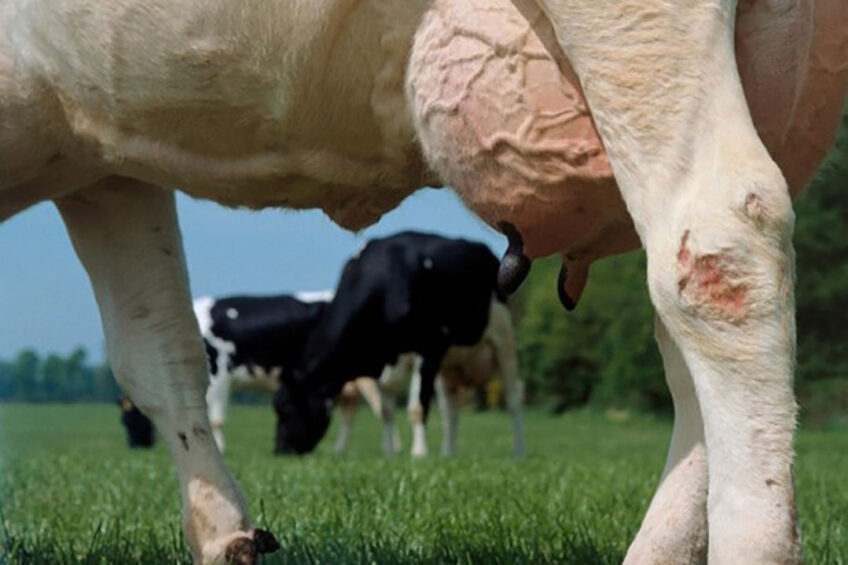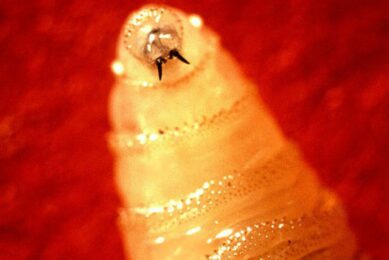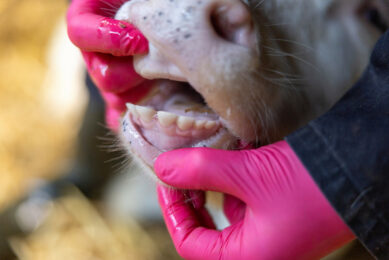Summer mastitis: Fly control, costs and protection

Mastitis is costly for any farmer and prevention is better than cure. How can we prevent summer mastitis? Here we take a look at fly populations and what can be done.
As fly populations reach their peak, farmers are reminded that prevention is better than cure to combat summer mastitis. According to Nadis, losing a quarter to summer mastitis can reduce a cow’s future milk production by 10% and the infection may cause up to 100kg liveweight loss, states a recent press release by MSD Animal Health.
Cases tend to surge in July and August, as warmer temperatures encourage fly activity, and wet weather makes the problem worse.

With the Met Office predicting an unsettled summer with above average temperatures, NFU dairy board chairman and Disease? Not On My Farm! ambassador Michael Oakes recommends carefully considering fly exposure to avoid costly illness in your herd.
Flies like mild, damp and sheltered spots, so we’re more likely to find transmitted infections in dry cows or heifers next to a wood or brook,” says Oakes.
The first sign of mastitis infection is usually a swollen teat with thick, clotted discharge. Large numbers of flies are often clustered around the udder, irritating the cow and causing her to kick frequently.
Within a week, visible swelling can develop into isolated behaviour, joint stiffness and reluctance to graze, rapidly impacting a cow’s body condition.
“I’ve found you often have to accept a loss in milk yield and sacrifice the infected quarter to save the cow, so it’s critical to act fast with treatment, or better still, implement preventative measures before flies strike,” he adds.
7 tips to reducing mastitis during the dry period
How to approach mastitis control? A recent Agriculture and Horticulture Development Board (AHDB) webinar shed some light on reducing mastitis during the dry period particularly. Find out more…
Fly control and preventative measures
Steph Small, MSD Animal Health dairy veterinary adviser, recommends farmers invest in preventative measures to reduce the chance of cows becoming sick.
“Fly control is the first line of defence against summer mastitis and is especially important if there’s no other option but to use grazing pastures next to woodland,” says Small.
“A pour-on suspension such as Butox Swish will deter biting or nuisance flies for 8 to 10 weeks, allowing cows to graze contently,” she advises.
“For most effective protection, apply this early in the grazing season before eggs and larvae start to develop to prevent the fly population spiraling out of control. Small concludes that diligent monitoring is crucial to spot early signs of infection.
“Checking cows regularly for swollen teats, and monitoring fly numbers surrounding the udder will help ensure prompt effective treatment. If you suspect a case of summer mastitis, contact your vet immediately for treatment advice,” she adds.
Cause
The primary causal organism is Actinomyces pyogenes in conjunction with other organisms that either enhance its activity or allow infection to develop. It is a very severe form of mastitis causing udder damage, high temperature and toxaemia. Infected quarters are generally lost and treatment is focussed at saving the animal and preventing pregnancy loss. The infected quarter becomes swollen and hard. When the quarter is drawn the strippings will be foul smelling. The extract may appear clear or with soft to cheesy type curds and as damage progresses there may be traces of blood, according to Teagasc.
Source and for more information, visit MSD Animal health
Join 13,000+ subscribers
Subscribe to our newsletter to stay updated about all the need-to-know content in the dairy sector, two times a week.










